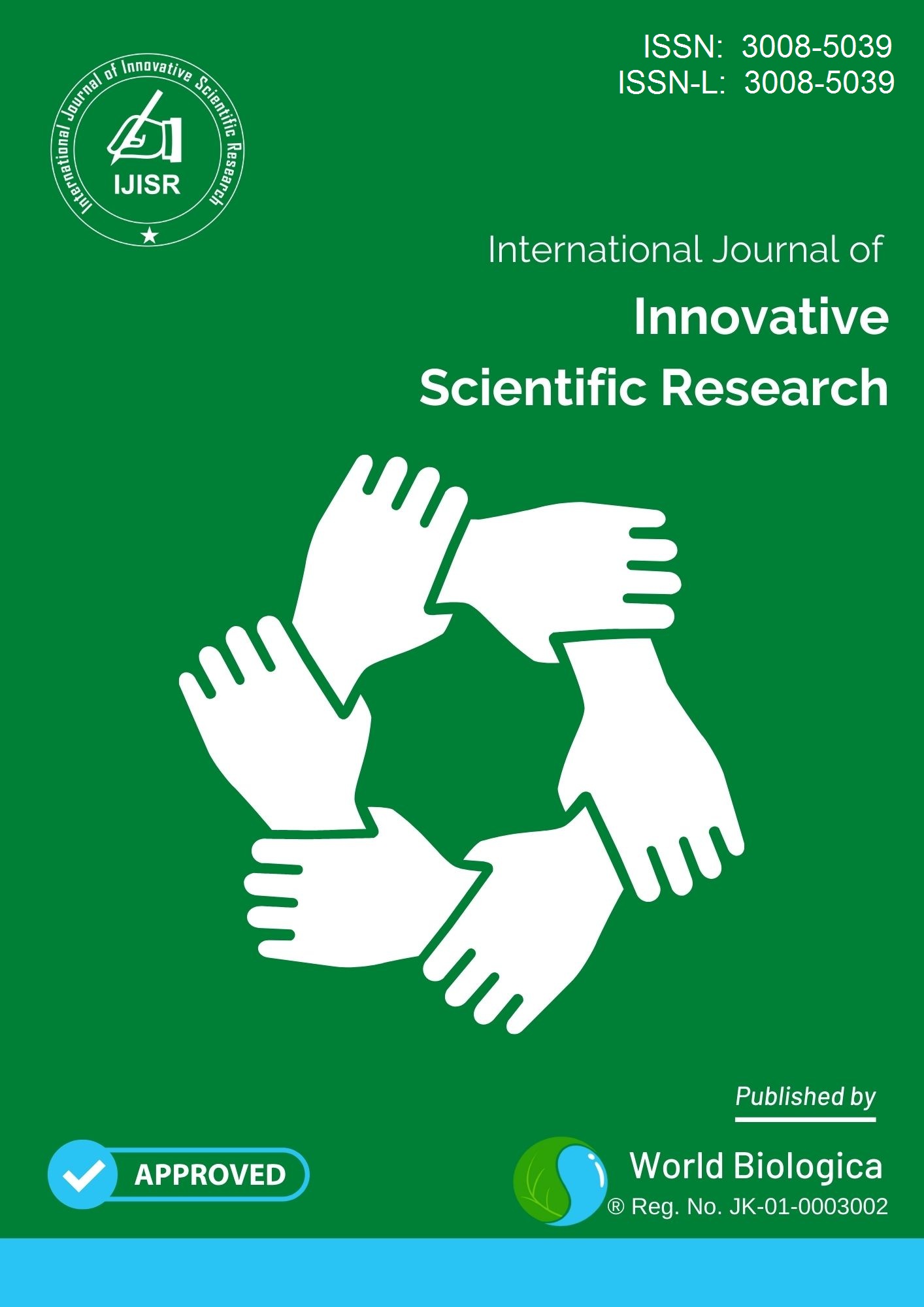Assessing the Antimicrobial Potential of Sea Cucumber Holothuria leucospilota from the Ratnagiri Coast
Keywords:
Antimicrobial activity, Bioactive marine compounds, Holothuria leucospilota, Natural antibacterial agents, Ratnagiri coastAbstract
This research explores the antibacterial and antifungal potential of extracts from Holothuria leucospilota collected from the Ratnagiri coast and examines the relationship between total phenolic content (TPC) and antimicrobial activity. The study utilized methanol-based extracts from the body wall, cuvierian tubes, and visceral mass, assessing their efficacy against bacterial strains and Candida albicans through the disc diffusion. Additionally, TPC in each tissue extract was quantified using the Folin-Ciocalteu assay to determine its correlation with antimicrobial properties. Results indicated a significant link between TPC and the strength of antimicrobial activity, with the cuvierian tube extracts showing the highest TPC levels and the strongest antibacterial and antifungal effects. These findings underscore the potential of H. leucospilota as a valuable source of natural antimicrobial agents, potentially contributing to the development of alternative therapeutic compounds for combating microbial infections. The observed strong correlation between phenolic content and antimicrobial efficacy suggests that the bioactive compounds within the cuvierian tubes could be further studied for their mechanisms of action and potential applications in pharmaceutical formulations. This study supports the broader investigation of marine resources for their bioactive properties, emphasizing the importance of sustainable exploration for new antimicrobial agents in response to rising antibiotic resistance.
Downloads
References
Adibpour N, Nasr F, Nematpour F, Shakouri A, America A. (2014). Antibacterial and antifungal activity of Holothuria leucospilota isolated from Persian Gulf and Oman Sea. Jundishapur J Microbiol 7 (1). https://doi.org/10.5812/jjm.8708
Andersson, L., Bohlin, L., Iorizzi, M., & Riccio, R. (1989). Biological activity of saponins and saponin-like compounds from starfish and brittle-stars. Toxicon, 27(2), 179–188. https://doi.org/10.1016/0041-0101(89)90131-1.
Bich, D. H., Chung, D. Q., Chuong, B. X., Dong, N. T., & Dam, D. T. (2004). The medicinal plants and animals in Vietnam. Hanoi Sci Technol Pub House, 1, 716.
Bordbar, S., Anwar, F., & Saari, N. (2011). High-value components and bioactives from sea cucumbers for functional foods—A review. Marine Drugs, 9(10), 1761-1805. https://doi.org/10.3390/md9101761.
Bryan, P. J., McClintock, J. B., Watts, S. A., Marion, K. R., & Hopkins, T. S. (1994). Antimicrobial activity of ethanolic extracts of echinoderms from the northern Gulf of Mexico. In David B, Guille A, Feral JP, Roux M (eds) Echinoderms through Time Balkema, 17-23.
Haug, T., Kjuul, A. K., Styrvold, O. B., Sandsdalen, E., Olsen, O. M., & Stensvag, K. (2002). Antibacterial activity in Strongylocentrotus droebachiensis (Echinoidea), Cucumaria frondosa (Holothuroidea), and Asterias rubens (Asteroidea). Journal of Invertebrate Pathology, 81(2), 94-102. https://doi.org/10.1016/s0022-2011(02)00153-2.
Hossain A., Dave D., Shahidi F. (2020). Northern sea cucumber (Cucumaria frondosa): A potential candidate for functional food, nutraceutical, and pharmaceutical sectors. Mar. Drugs. 18:274. https://doi.org/10.3390/md18050274.
Kim B, Han JW, Thi Ngo M, Le Dang Q, Kim JC, Kim H, Choi GJ. (2018). Identification of novel compounds, oleanane- and ursane-type triterpene glycosides, from Trevesia palmata: their biocontrol activity against phytopathogenic fungi. Sci Rep 8: 14522. https://doi.org/10.1038/s41598-018-32956-4.
Kim, S. K., & Wijesekara, I. (2010). Development and biological activities of marine-derived bioactive peptides: A review. Journal of Functional Foods, 4(1), 1-9. https://doi.org/10.1016/j.jff.2010.01.003.
Mohammadizadeh F, Ehsanpor M, Afkhami M, Mokhlesi A, Khazaali A, Montazeri S. (2013). Evaluation of antibacterial, antifungal and cytotoxic effects of Holothuria scabra from the North Coast of the Persian Gulf. J Mycol Méd 23 (4): 225-229. https://doi.org/10.1016/j.mycmed.2013.08.002.
Pangestuti R, Arifin Z. (2018). Medicinal and health benefit effects of functional sea cucumbers. J Tradit Complement Med 8 (3): 341-351. https://doi.org/10.1016/j.jtcme.2017.06.007.
Ridzwan, B. H., Kaswandi, M. A., Azman, Y., & Fuad, M. (1995). Screening for antibacterial agents in three species of sea cucumbers from coastal areas of Sabah. General Pharmacology, 26(7), 1539-1543. https://doi.org/10.1016/0306-3623(95)00041-0.
Suleria, H. A. R., Osborne, S., Masci, P., & Gobe, G. (2015). Antioxidant and anti-inflammatory properties of marine algae extracts for nutraceutical applications. Journal of Medicinal Food, 18(4), 472-478.
Downloads
-
Download PDF
 Abstract Views: 286,
Abstract Views: 286,  Download PDF: 63
Download PDF: 63
Published
Issue
Section
License
Copyright (c) 2024 International Journal of Innovative Scientific Research

This work is licensed under a Creative Commons Attribution-ShareAlike 4.0 International License.

















